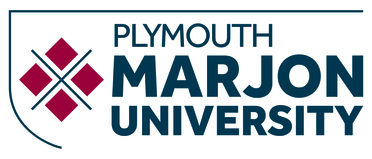How Can Physical Activity Referral Rates for Breast Cancer Patients be Increased?
Queen, Martyn, Karatzaferi, Christina, Bloxham, Saul, Panwar, Udaiveer, Drew, Philip, Barton, Andrew G., Edwards, Andrew M. and Sakkas, Giorgos K. (2016) How Can Physical Activity Referral Rates for Breast Cancer Patients be Increased? Frontiers in Oncology, 6. ISSN 2234-943X
|
Text
How Can Physical Activity Referral Rates for Breast Cancer Patients Be Increased - Published Version Available under License Creative Commons Attribution. Download (129kB) |
Abstract
Exercise therapy is beneficial for cancer survivors’ biopsychosocial aspects of health (1–3); however, the rates of exercise referrals by the oncology providers (OPs) and supporting teams remain low, causing a paradox. We chose to address this issue in this opinion article. We discuss the possible barriers that make the OPs unable or reluctant to refer more patients to exercise therapy sessions and also briefly address issues of patients’ adherence. Finally, the available exercise therapy infrastructure is discussed as an additional barrier to the therapeutic benefits of exercise. Our rationale is based on the fact that physical activity (PA) can enable wide-reaching benefits for the recovery of cancer patients during and after cancer treatment (4–6). Moreover, and specifically for breast cancer survivors, the recent trials and a systematic review disproved the notion that arm exercise should be avoided (i.e., postoperative progressive arm resistance training does not precipitate or exacerbate lymphedema) (7–9). This further supports the beneficial effects of PA across a range of contexts. In the UK, 1.6 million cancer survivors out of a total of 2 million do not meet the minimum recommended PA guidelines for sustaining an independent and disability-free lifestyle (10). A single-blinded randomized control trial has shown that cancer survivors are more likely to become physically active if they are advised to do so by a health-care professional (11). This highlights the impact OPs have on patients’ life and survival, especially when the treatments involve a life-changing approach, such as increasing PA levels, commitment to exercise training, and adopting a healthier lifestyle. Based on our own knowledge on cancer care practices and on research experience in other patient populations (12), we hypothesized that the main reasons behind the exercise referral paradox for breast cancer survivors in England are (1) lack of time during a consultation to promote PA, (2) OPs and supporting team lack of current knowledge and awareness of the benefits of PA in cancer survivors’ biopsychosocial aspects of health, and (3) the lack of knowledge and confidence from the patients’ side to request an exercise referral from the OPs.
| Item Type: | Article |
|---|---|
| Keywords: | physical activity, breast cancer, referral rate |
| Divisions: | ?? UniversityCollegePlymouthMarkJohn ?? |
| Depositing User: | Users 134 not found. |
| Date Deposited: | 16 Sep 2016 12:51 |
| Last Modified: | 10 Mar 2020 15:30 |
| URI: | https://marjon.repository.guildhe.ac.uk/id/eprint/10189 |
Actions (login required)
 |
Edit Item |

